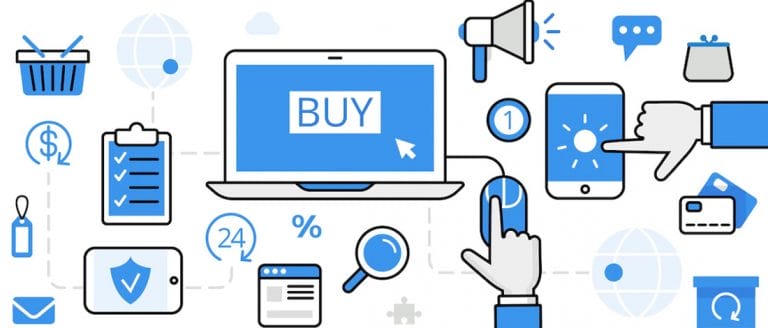Content Marketing is an advertising strategy that utilizes online content to draw in and retain customers. It differs from traditional advertising in that the focus is on creating and distributing valuable content, not on promoting a product or service. Content can take many forms, including articles, blog posts, infographics, images, and videos. By creating content that is relevant to their target audience, businesses can connect with potential and current customers in a more meaningful way.
In a nutshell, content marketing is the creation and distribution of valuable, relevant, and consistent content to attract and retain a target audience. The purpose of content marketing is to create and nurture a relationship with customers, positioning your company as a thought leader in your industry.
Why Content Marketing is Important?

For businesses, the purpose of content marketing is to create content that educates and engages potential and current customers. Content marketing can take many forms, from blog posts and social media updates to e-books and video content. The most important thing is that the content is relevant to your audience and provides value. Content marketing is important because it allows businesses to create and share valuable content with their target audience.
This type of marketing helps to build trust and credibility with potential and current customers, which can lead to increased sales and brand awareness. Content marketing is also an effective way to improve SEO results, as well as drive traffic to your website or blog.
1. Content marketing is important because it helps businesses create and distribute valuable, relevant, and consistent content to attract and retain a clearly defined audience.
2. Content marketing is an effective way to reach and engage customers, establishing trust and credibility while building a relationship of loyalty.
3. Content marketing can take many different forms, such as blog posts, articles, infographics, photos, videos, or social media posts.
4. By creating and sharing valuable content, businesses can help build trust and credibility with their target audience.
5. Content marketing also helps businesses reach a larger audience online, which can result in more leads and sales.
How does Content Marketing Work?

Content marketing is a technique businesses use to create online content that is both informative and appealing to customers. This content can take many forms, such as blog posts, social media updates, and videos. The goal of content marketing is to attract and retain customers by providing them with valuable information that they can use in their everyday lives. Content marketing is a great way to build trust with customers and differentiate your business from the competition.
Awareness Stage
Content marketing is a great way to increase awareness of your business and attract new customers. It can help you build relationships with potential customers and convert them into loyal customers.
You should also use this stage to build relationships with potential customers. Start by creating a strong social media presence, and by engaging with people who are interested in your topic. Be sure to respond to comments and questions, and offer helpful advice and information.
The goal of the awareness stage is to attract attention and introduce people to your product or service. Once they're aware of what you have to offer, they may be more likely to consider buying it.
Consideration Stage
In the Consideration Stage of the buyer's journey, potential buyers are actively researching their options. In order to reach these buyers, content marketers must produce content that is relevant to their interests and stage in the buying process. Content must be educational and helpful, not promotional or self-promoting. It should be useful enough that buyers will want to keep reading it, even if they don't end up buying your product or service.
In order for content marketing to work, it must be used in conjunction with a strong digital marketing strategy. This is because content marketing is all about creating valuable content that will help to move potential customers through the buying process. In order to create effective content, businesses need to understand their target audience and what types of information would be most relevant and useful to them. Once the content is created, it needs to be promoted through various channels in order to reach as many people as possible.
Closing Stage
In order for content marketing to work, it is important to have a strategy in place. This includes understanding your target audience, what you want to achieve with the campaign, and what type of content you will create. Once you have this information, you can start creating content that is relevant to your target audience and that will help you achieve your goals.
It's also important to distribute your content in a way that will reach your target audience. This may include using social media, email marketing, and paid advertising. By using a combination of these methods, you can create a successful content marketing campaign that will help you close more sales and grow your business.
How to Get Started with Content Marketing?
 Content marketing is a great way to reach new customers and grow your business. But how do you get started? Here are some tips:
Content marketing is a great way to reach new customers and grow your business. But how do you get started? Here are some tips:
1. Identify your audience: who are you trying to reach with your content? Once you know, you can create content that is relevant to them.
2. Determine the right formats: There are many different ways to share content - articles, blog posts, videos, infographics, etc. Choose the format that will work best for your audience and your goals.
3. Decide who will write, edit, and proofread: Content marketing takes time and effort, so it's important to have a team of people who can help you create quality content.
4. Determine how you'll distribute your content: This includes figuring out what channels you'll use (e.g. blog, social media, email) and what type of content you'll create (e.g. blog posts, videos, infographics).
5. Choose a sustainable schedule and stick to it: Consistency is key when it comes to content marketing - if you can't commit to publishing regularly, your efforts will likely be fruitless.
6. Follow best practices: There are a lot of best practices for content marketing, and it can be difficult to keep up with all of them.
Conclusion
Content marketing is a strategic approach to creating and distributing valuable, relevant, and consistent content to attract and retain a clearly defined audience — and, ultimately, to drive profitable customer action. It's an essential component of inbound marketing, and it can be used to support a variety of marketing objectives, such as generating leads, building brand awareness, nurturing customer relationships, and creating sales opportunities.




